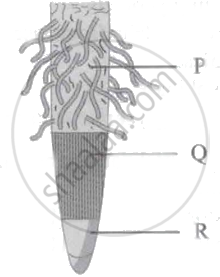Advertisements
Advertisements
प्रश्न
Explain micropropagation and somatic hybridization.
उत्तर
Micropropagation:
It is a type of tissue culture technique by which large number of plants propagules are produced.
In this technique, shoot apical meristem is used as explants. Using the proper proportion of
growth hormones and tissue culture techniques many shoot apices can be produced.
These shoot apices are called Micropropagules. These are genetically identical and from
them, individual plants can be obtained. eg : Potato, banana and orchids. [11/2]
Somatic hybridization:
The protoplast from two different plants can be made to fuse by using fusogenic agent as
polyethylene glycol (PEG). From the resultant combined protoplast by tissue culture, a new
plant variety can be produced.
e.g. Pomato = Potato + Tomato
Raphanobrassica = Raphanus + Brassica
APPEARS IN
संबंधित प्रश्न
Mention one significant difference between Symplastic movement and apoplastic movement
Why are xylem and phloem classified as complex tissues?
How can healthy potato plants be obtained from a desired potato variety which is viral infected? Explain.
Attempt any TWO of the following:
Enlist the applications of tissue culture.
List any four applications of tissue culture.
Identify labels P, Q, R in the given figure of root showing different regions.

Given below are a few statements regarding somatic hybridization. Choose the correct statements.
- protoplasts of different cells of the same plant are fused
- protoplasts from cells of different species can be fused
- treatment of cells with cellulase and pectinase is mandatory
- the hybrid protoplast contains characters of only one parental protoplast
Why are plants obtained by protoplast culture called somatic hybrids?
What are the physical barriers of a cell in the protoplast fusion experiment? How are the barriers overcome?
Discuss how the property of plant cell totipotency has been utilised for plant propagation and improvement
